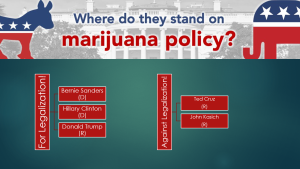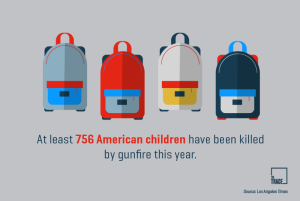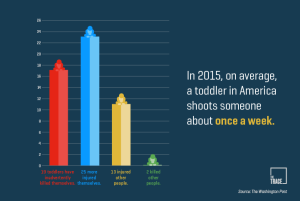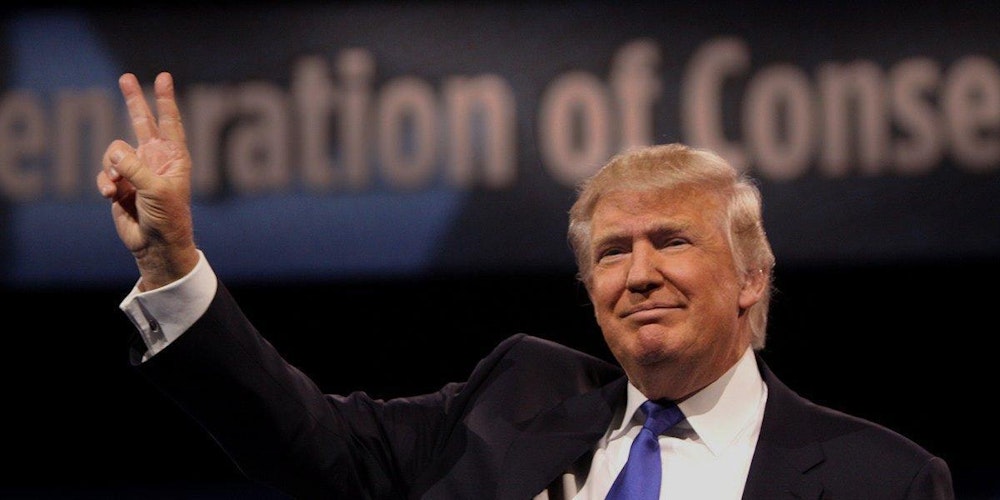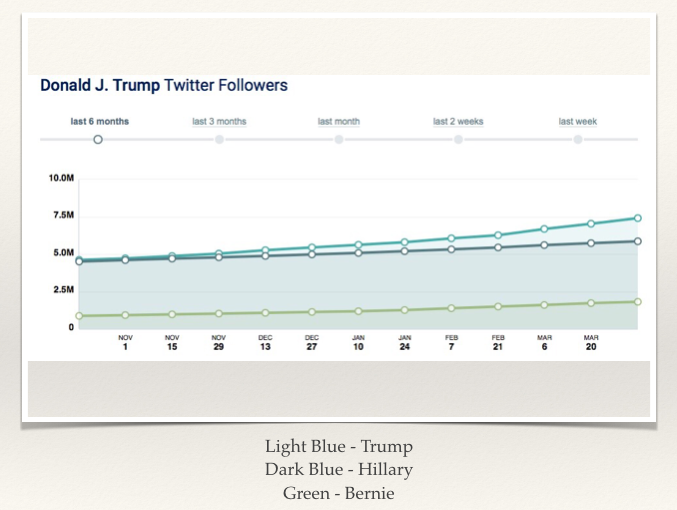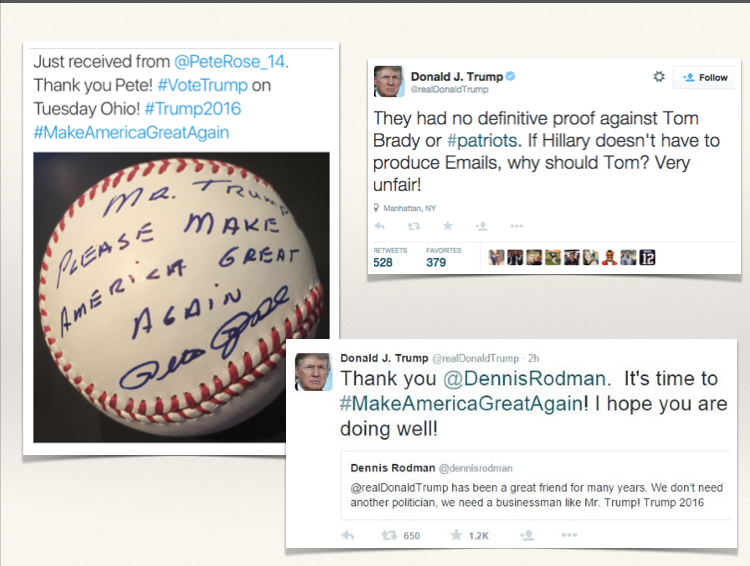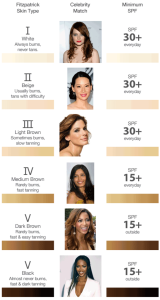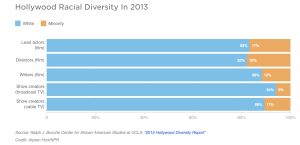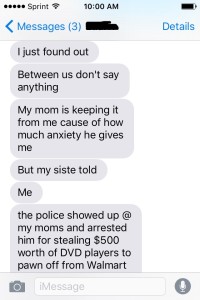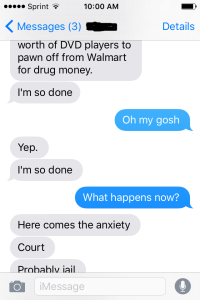If you google “dumb quarterbacks today”, you will find young ex-Cleveland Browns quarterback Johnny Manziel on that list. That led me to the partying, Alcoholic Johnny Manziel. Which subsequently brought me to his trouble-stricken teammate, Josh Gordon. Josh Gordon was suspended without pay for all of last season and onto next season due to violating the NFL Policy and Program for Substances of Abuse. After researching more about the banning of athletes for marijuana issues, a recurring theme was the hashtag, #FeelTheBern. So after a good weeks’ worth of research on the topic of marijuana legalization, I stumbled upon bill H.R. 1013.
Bill H.R. 1013 is the bill that decriminalized cannabis. Also known as the bill to “Regulate Marijuana like Alcohol Act”, H.R. 1013 was implemented to decriminalize marijuana at the Federal level, to leave to the states a power to regulate marijuana that is similar to the power they have to regulate alcohol, and for other purposes. It directs the Attorney General to issue a final order that removes marijuana in any form from all schedules of controlled substances under the Controlled Substances Act.
Here’s the Federal Timeline of cannabis laws over the years. In 1937 the Marijuana Tax Act was passed, effectively prohibiting all use of cannabis on a federal level. In 1970 the Controlled Substances Act is passed, prohibiting cannabis federally along with several other drugs and replacing the 1937 act. Bill H.R. 1013 was passed during the 114th Congress in 2014. The United States House of Representatives pass a bill prohibiting the DEA from using funds to arrest medical cannabis patients in states with medical cannabis laws.
Here’s the State Timeline of cannabis laws over the years. From 1973 to 1978 10 states decriminalized Cannabis. In 1996, California legalized Medical Cannabis. From 1998 to 2012 11 additional states legalized the use of Medical Cannabis. In 2012 Washington and Colorado legalized recreational marijuana for adults 21 years of age or older. From 2014 to 2015 7 more states legalized/decriminalized Medical Cannabis. In total, 23 states legalized/decriminalized the use of Medical Marijuana.
After doing extensive research, here is a list of some of the positives for the legalization of Cannabis: Boost in Revenue, More effective criminal justice and law enforcement, Medical Benefits, Personal freedom, and loss of business for Drug Dealers, i.e. Cartels. According to the nytimes.com “U.S. Border patrol has been seizing steadily smaller quantities of the drug, from 2.5 million pounds in 2011 to 1.9 million pounds in 2014. Mexico’s army has noted an even steeper decline, confiscating 664 tons of cannabis in 2014, a drop of 32% compared to year before.”
One of the biggest examples of how the legalization would impact a culture is Colorado. As I mentioned in the State timeline, Colorado legalized recreational marijuana for adults 21 years of age or older. According to Uniform Crime Reporting data for Denver, there has been a 10.1% decrease in overall crime and a 5.2% drop in violent crime. The state is estimated to potentially save $12-40 million over the span of a year simply by ending arrests for marijuana possession. The state has collected over 10 million in taxes from retail sales in the first 4 months. The first 40 million of this tax revenue is earmarked for public schools and infrastructure. Governor of Colorado John Hickenlooper said, “While the rest of the country’s economy is slowly picking back up, we’re thriving here in Colorado.”
To play devil’s advocate, here is a list of concerns for the legalization of Cannabis: Addictive Nature, Altered perception, “Gateway” Drug Status, Increase of DUI in being stoned, Increased chance of Children usage, and damage to the brain. According to nyln.org, “One study has shown that blood vessels in the brain of a marijuana smoker experience restricted flow, which can continue even after a month of abstinence.
“In the discussion of legalizing marijuana, a useful analogy can be made to gambling. MacCoun & Reuter (2001) conclude that making the government a beneficiary of legal gambling has encouraged the government to promote gambling, overlooking it as a problem behavior. They point out that “the moral debasement of state government is a phenomenon that only a few academics and preachers bemoan.” Legalized gambling has not reduced illegal gambling in the United States; rather, it has increased it. This is particularly evident in sports gambling, most of which is illegal. Legal gambling is taxed and regulated and illegal gambling is not. Legal gambling sets the stage for illegal gambling just the way legal marijuana would set the stage for illegal marijuana trafficking. The gambling precedent suggests strongly that illegal drug suppliers would thrive by selling more potent marijuana products outside of the legal channels that would be taxed and otherwise restricted. If marijuana were legalized, the only way to eliminate its illegal trade, which is modest in comparison to that of cocaine, would be to sell marijuana untaxed and unregulated to any willing buyer.“ (cnbc.com/id/36267223)
So Back to Bernie Sanders and how my topic relates to the election. With 4 candidates left in the presidential race, let me show you where each representative stands on the issue.
First off is Ted Cruz. According to mpp.org, Ted Cruz said he is opposed to the legalization of marijuana for adult use, but he believes states should be able to have the right to establish their own policies. In April 2016, he said he would not attempt to roll back the laws approved in states like Colorado and Washington. “Drug addiction shouldn’t be criminalized. We need to treat it appropriately.” The Washington Post, May 4, 2015
Democrat Hillary Clinton says she supports the legal access to medical marijuana and more research into the medical benefits of marijuana. In 2014, when asked about the legalization laws approved in Colorado and Washington, she said “states are the laboratories of democracy” and that she wants to see what happens in those states prior to taking a position in support or opposition to such laws. “I think what the states are doing right now needs to be supported, and I absolutely support all the states that are moving toward medical marijuana, moving toward — absolutely — legalizing it for recreational use. …What I’ve said is let’s take it off the what’s called Schedule I and put it on a lower schedule so that we can actually do research about it. There’s some great evidence about what marijuana can do for people who are in cancer treatment, who have other kind of chronic diseases, who are suffering from intense pain. There’s great, great anecdotal evidence but I want us to start doing the research.” Jimmy Kimmel Live, March 24, 2016
Republican candidate Donald Trump says he supports legal access to medical marijuana, and he believes states should be able to set their own marijuana policies with regard to adult use. “We’re losing badly the war on drugs, you have to legalize drugs to win that war. You have to take the profit away from these drug czars.”-Miami Herald “In terms of marijuana and legalization, I think that should be a state issue, state-by-state. … Marijuana is such a big thing. I think medical should happen — right? Don’t we agree? I think so. And then I really believe we should leave it up to the states.” Washington Post, October 29, 2015
Democrat Bernie Sanders has proposed legislation that would remove marijuana from the federal drug schedule and ensure states are allowed to regulate it similarly to how they are allowed to regulate alcohol; i.e. Bill H.R. 1013. “Someone in the United States is arrested every minute on marijuana charges. Too many Americans have seen their lives destroyed because they have criminal records as a result of marijuana use. That’s wrong. That has got to change.”
Here are some Drug War statistics, brought to you by http://www.drugpolicy.org/drug-war-statistics.
- Number of Americans incarcerated in 2014 in federal, state and local prisons and jails: 2,224,400 or 1 in every 111 adults, the highest incarceration rate in the world.
- Number of arrests in 2014 in the U.S. for drug law violations: 1,561,231
- Number of these arrests that were for possession only: 1,297,384 (83 percent)
- Number of arrests in 2014 in the U.S. for marijuana law violations: 700,993
- Number of these arrests that were for possession only: 619,809 (88 percent)
- Proportion of people incarcerated for a drug offense in state prison who are black or Latino, although these groups use and sell drugs at similar rates as whites: 57 percent
- Number of states that have decriminalized marijuana by eliminating criminal penalties for simple possession of small amounts for personal use: 20
The most necessary step in the debate over the legalization of marijuana is to completely decriminalize the use of marijuana. As Bernie Sanders pointed out, way too many lives are being ruined or brought to a standstill because of legal actions against them due to the violations of marijuana laws. There is more than enough evidence to support the good effects that legalizing cannabis would have both on the judicial system but also on the US economy. Although the cons are relevant enough to raise apprehension, the Pros are so strong that it’s worth risking the concerns to have the potential payout (both figuratively and literally). By passing bill h.r. 1013 making marijuana regulated like alcohol, you are able to regulate the trafficking of drugs in the US and you already have set guidelines on how to do it. End the prohibition. Save lives.
[1] How well does the title provocatively focus the reader’s attention, as well as the lede? Is it thoughtful, creative, clever? Does it lead the reader into the text and provide some insight into the issue?
I added the title to my opening photo to try and “flare” it up. I feel like it is thoughtful, creative and clever but I suppose that’s a biased opinion.
[2] How well does the introductory section of the article invite the reader into the paper, as well as offer up exigency? How does it locate a problem or controversy within a context that provides background and rationale?
The opening paragraph was a Segway on how I stumbled upon the topic I chose. It adds some insight into the background of the legalization of cannabis.
[3] How well does the writer offer up a strong ‘idea’ that requires analysis to support and evolve it, as well as offers some point about the significance of evidence that would not have been immediately obvious to readers.?
The writer does a good job initially bringing about an idea that has to be supported. Both sides of the argument are covered but in the end its clear where the writer stands on the argument and has enough evidence to back up the position.
[4] How well does the writer show clarity of thought; uniqueness of presentation; evidence of style; and historicized topics?
Even though there are arguments for both sides of the topic, the writer does a good job making a final conclusion to clarify his stance. The writer added some of his own touch by creating timelines for both the federal and state levels of cannabis Laws.
[5] How well does the writer recognize that a NYTs Magazine audience will challenge ideas that are overgeneralized or underdeveloped or poorly explained? (that is, did the writer avoid cliché and vagueness or address points/issues readers are likely to have?) How well did the writer decide about how to develop, sequence, and organize material?
The writer did a good job touching on multiple issues that surround the subject while still holding a strong and clear position.
[6] How well does the writer research a controversy, develop a persuasive stance, utilize research about the topic, and join the ‘debate’ by making an argument of importance?
Again, both sides of the topic were covered and through extensive research made clear throughout the paper, a persuasive stance was developed.
[7] How well does the writer meet or exceed research expectations of assignment requirements (6 appropriate secondary sources, 1 visual source, (or more) and primary research? ).
The writer exceeded the research expectation by putting mutlitple visual sources from the secondary sources into the paper. Primary research is evident throughout the paper.
[8] How well does the writer integrate secondary and primary sources (that support and complicate the topic) effectively into the text, introducing and contextualizing them, and “conversing” (i.e. no drop-quoting) in ways that deepen and complicate the analysis?
Especially during the presidential campaign portion of the article you can see signs of well integrated secondary and primary sources. No matter the stance of the candidate opinions were both quoted and analyzed.
[9 How well does the writer persuade an audience to consider claims made from a particular position of authority on which you have built your research? How strong and effective is the writer’s use of rhetorical tools (ethos, logos, pathos)?
The writer does a good job showing statistics and facts to support the claim made. Even though this wasn’t necessarily written as a persuasive piece, it still has enough backbone to persuade the reader into following the intended target.
[10] How well does the writer select appropriate, interesting, revealing visual? Has the writer placed a visual strategically in the essay and provided relevant commentary on and/or analysis of them? Do the visuals contribute to the essay in meaningful ways (i.e. would the essay be affected if the writer took the visual away)?
When I wrote about the timelines of the federal and state legalization of cannabis, I built a visual timeline making it easier to both follow and understand how critical changes in the government were. I broke down each presidential candidates stance on the topic but in order to simplify it even further I constructed a chart diagramming exactly which side the candidate supported.
[11] How well does the writer show development of final article using various drafts, in-class peer editing and workshops, and/or teacher comments?
The most helpful workshop for me was the Scramble workshop. After my partner put my paper back in order based on the flow she felt worked best I was able to recognize a different order than I initially had in my earlier drafts.
[12] How well does the writer use hyperlinks—are they effective/appropriate?
The writer used two hyperlinks rather effectively. Whenever information was directly brought from an outside source the source could be found by using a hyperlink.
[13] How well did the writer edit for grammar, style, and usage effectively? Does the writer’s attention to sentence level issues help him/her establish authority or credibility on the issue?
With a lack of poor grammar there is an apparent proofreading portion to the process. It is credible.




